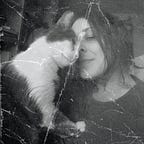Hnefatafl: The Forerunner of Modern Board Games
Hnefatafl was a popular board game during the Viking Age. Unfortunately, the rules of the game have been lost in the depths of time. Still, we will present what we know (or guess) about them today.
Based on various sources, we can gather that hnefatafl was a game for two players, where one person was in charge of a vast army attacking a smaller one led by a king. The objective of the game was, probably, to checkmate the king. Some speculations have it that dice were also used, but there are no reliable data to confirm this, as the sagas are the main source for this assumption. There are no archaeological findings confirming the theory whatsoever.
The term hnefatafl is coined from two words: hnefi (“king”) and tafl (pronounced: tavl, meaning “board”). The game had formerly been known as tavl, with the compound word replacing it when the need to differentiate between hnefatafl and other board games arose. The term probably became common in the XII century, when chess was introduced in Europe.
Hnefatafl was also known outside of Scandinavia. During the Viking expansions, the game reached Iceland, England, Ireland, Greenland, and Wales. Hnefatafl was by no means the only known board game at the time. Other similar table games had been known throughout Europe before chess replaced them (Scandinavians called it “skaktafl”).
According to some sources, hnefatafl was reserved for the elite. E.g., Rigsthula [Rigsþula] informs us that Jarl learned to swim and “play tafl”, while Frithiof’s Saga [Friðþjófs saga hins frœkna] states that hnefatafl was reserved for Frithiof himself. According to The Saga of Gunnlaug Serpent-Tongue [Gunnlaugs saga ormstungu], women were also known to play tafl. Unfortunately, neither of these sagas informs us about the game's rules.
Archeologists have offered some info, however. Several hnefatafl boards have been unearthed so far, the best-known ones being the board found at the Gokstad ship burial mound (partially damaged) and the stone board from the Brough of Deerness, Orkney.
Due to numerous Viking expansions, many hold that Swedish botanist Carl Linnaeus’ (1707 -1778) writings (Iter Lapponicum) are credible when it comes to hnefatafl. Linnaeus wrote about a board game played by the Saami people, known as tablut. Given that the man didn’t speak the language, he described what he saw. His description is unfinished and reads:
“The Tablut board is marked out with 9 x 9 squares, the central one being distinctive and known as Konakis or throne. Only the Swedish king can occupy this square. One player gas eight blonde Swedes and their monarch; the other has sixteen dark Muscovites. The king is larger than the other pieces. The Muscovites are placed on the embroidered squares. (The board was made of reindeer skin ornamented with needlework as the Lapps had no cloth).”
Linnaeus wrote that the tablut board was made of reindeer skin. Reversely, hnefatafl boards — at least according to the archaeological findings — were made of stone. As for the pieces, The Saga of Hervor and Heidrek [Hervarar saga OK Heiðreks] offers some insights.
Namely, it features riddles referring to tafl. According to the answers, dice were used for playing the game. Moreover, the pieces were made of reindeer antlers, walrus tusks, or deer bone. The king and his army were dark pieces, while the attackers were light, according to the source.
On top of the abovementioned materials, it is also known that tafl figures were made of glass. In Birka, Sweden, archaeologists have found numerous figures made of various materials, glass included.
Probably the best-known tafl set is on display at The National Museum of Iceland in Reykjavik. It was discovered in the late XIX century in Baldursheimur, Iceland. Among these twelve tafl pieces made of walrus tusks is a 3,9 cm long king piece made of whalebone (the header image).
The king is seated and is holding his long beard. This piece is, by the by, the only Viking Age figure showing the face of a person (figures representing the gods were carved with faces, while humans’ faces were featureless).
Instead of a conclusion, let’s mention the Ockelbo Runestone (quite famous among archaeologists, too). Originally, it was only one of the Sigurd stones (named after Sigurd the Volsung, the protagonist of the Volsunga saga) and is relevant to this brief because it features carvings of two people playing hnefatafl.
The Ockelbo Runestone was discovered in 1795 within the foundation wall of the Ockelbo Church, whence it was moved to the very church (1830). After the 1904 fire, both the rune stone and the church were destroyed. What we know today as the Sigurd rune stone in Ockelbo is a replica made in 1932. Ever since then, it has stood in front of the reconstructed church.
The article was originally published on eZine years ago. With the website breaking down, I’m reposting it here with some minor edits. The original was written in Serbian and is available on my website.
